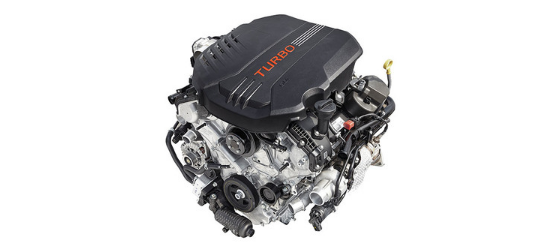The Pursuit for Ultimate Driving Power: Investigating the Peak of Engine Performance and Technological Innovations in the Automotive Market
In the realm of vehicle design, the pursuit of maximum driving power has been a relentless pursuit that has unfolded through the development of engine style and the combination of cutting-edge innovations. From the thorough craftsmanship of combustion engines to the rapid advancements in electrical propulsion systems, the automotive field stands at the cusp of a brand-new age identified by unprecedented efficiency capabilities.
Development of Engine Design

In addition, the integration of turbocharging and supercharging modern technologies has revolutionized engine layout by enhancing power without substantially boosting engine dimension. These forced induction systems compress the consumption air, permitting even more gas to be combusted, thereby creating better power output from a smaller engine. This development has actually been specifically essential in enhancing the efficiency of smaller sized displacement engines while maintaining fuel effectiveness requirements.

Performance-Enhancing Fuel Technologies
The execution of innovative gas innovations has considerably contributed to enhancing engine efficiency in modern automobiles. Biofuels, obtained from eco-friendly sources like corn, sugarcane, or algae, offer lowered discharges and improved engine effectiveness. In addition, fuel additives and detergents are being developed to tidy engine components, optimize combustion, and reduce friction, therefore boosting overall lorry performance.
Developments in Electric Propulsion
Considerable strides in electric propulsion innovation have revolutionized the vehicle industry, leading the way for a brand-new period of lasting and reliable transport. Electric vehicles (EVs) are obtaining popularity because of their ecological benefits and innovations in battery innovation, allowing longer driving arrays and shorter charging times. Manufacturers are spending greatly in research and growth to improve the performance of electrical propulsion systems, concentrating on raising power result, boosting energy effectiveness, and decreasing overall weight.
One noteworthy advancement in electric propulsion is the advancement of advanced electric motors that provide higher torque and power density, leading to enhanced velocity and overall driving performance. Additionally, regenerative stopping systems have actually been refined to capture and store power during deceleration, further boosting the performance of EVs.
In addition, the combination of smart technologies, such as artificial knowledge and anticipating analytics, is optimizing the monitoring of electrical propulsion systems, making certain ideal performance under different driving problems. These developments in electric propulsion are reshaping the automotive landscape, driving the sector towards an extra sustainable and energized future.
Impact of Computational Fluid Dynamics
With developments in electric propulsion pushing the boundaries of automotive innovation, the assimilation of Computational Fluid Characteristics is playing a pivotal role in optimizing wind resistant performance and boosting total effectiveness in vehicle style. Computational Liquid Characteristics (CFD) includes making use of computer simulations to assess the flow of air around a vehicle, making it possible for designers to anticipate exactly how style adjustments will impact the rules of aerodynamics without the demand for pricey physical models. By precisely modeling air movement patterns, CFD enables the improvement of vehicle shapes to reduce drag, boost cooling, and improve security.
One key advantage of making use of CFD in lorry layout is the capability to iterate swiftly, exploring see this site many design variants to determine one of the most aerodynamically efficient options. This repetitive procedure causes vehicles that are not just sleeker and more aesthetically appealing yet also more ecologically friendly and fuel-efficient. Moreover, CFD allows designers to enhance air movement around components such as radiators, engine bays, and wheel wells, contributing to enhanced performance and general driving experience. Finally, the integration of Computational Liquid Dynamics stands for a substantial advance in the pursuit for best driving power and performance in the automotive market.
Future Patterns in Engine Technology
In the dynamic landscape of automotive design, advanced improvements are forming the future trajectory of engine development. The future of engine design is marked by a solid focus on efficiency, sustainability, and efficiency. Manufacturers are increasingly concentrating on establishing engines that not just supply high power results but additionally focus on ecological responsibility by boosting and reducing discharges fuel efficiency.
One popular fad in engine development is the rise of electrification. Hybrid and electrical powertrains are obtaining traction as practical alternatives to typical burning engines. These modern technologies supply the potential for significant reductions in carbon discharges and raised power effectiveness, aligning with global efforts to battle climate modification.
Moreover, improvements in products scientific research and manufacturing methods are making it possible for the manufacturing of lighter and a lot more sturdy engine parts. This shift towards lightweight materials such as carbon fiber and light weight aluminum alloys contributes to boosted efficiency and fuel economic climate.
Final Thought
In verdict, the pursuit of best driving power in the automotive market proceeds to drive developments in engine layout, fuel innovations, electrical propulsion, and computational fluid characteristics. The development of these modern technologies is shaping the future of engine development, paving the method for more efficient and powerful lorries (engines for africa). As the market remains to push the limits of what is possible, we can expect to see a lot more revolutionary developments in the quest for peak efficiency
One of the vital milestones in engine layout advancement is the transition from traditional carbureted engines to useful link modern fuel-injected systems. By exactly metering the gas delivery to each cylinder, fuel-injected engines maximize combustion, resulting in far better performance and decreased ecological effect.
Moreover, the assimilation of turbocharging and turbo charging innovations has revolutionized engine design by increasing power without dramatically enhancing engine size (engines for africa).The click here for more info application of innovative fuel modern technologies has actually considerably contributed to enhancing engine efficiency in modern-day cars. Furthermore, fuel ingredients and detergents are being formulated to clean engine elements, enhance combustion, and decrease friction, consequently enhancing overall automobile performance